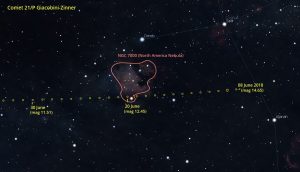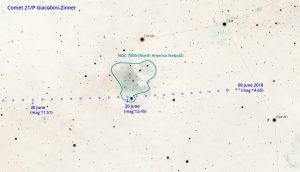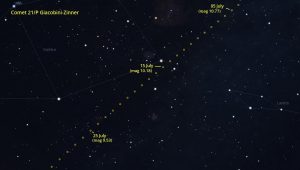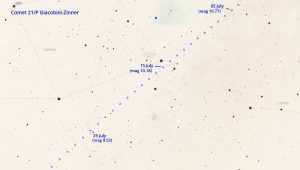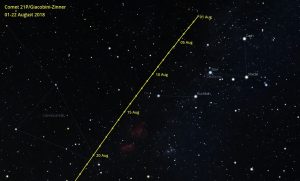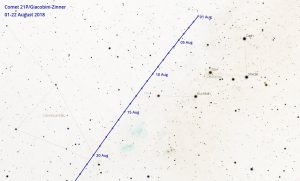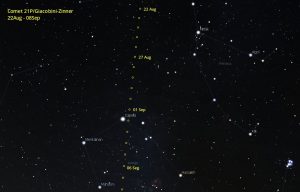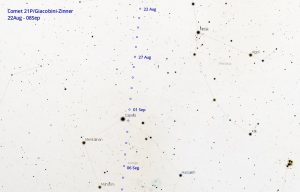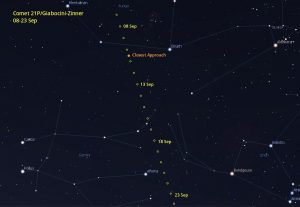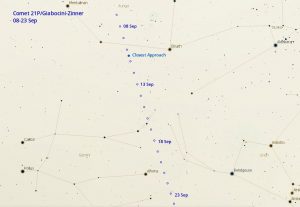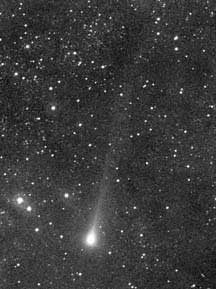
Discovery, Orbit and Size
Discovered by Michael Giacobini in December 1900 at the Nice observatory, Comet 21P/Giacobini-Zinner caused some confusion when Ernst Zinner unknowingly observed its return 6.5 years later. The comet’s orbital period was thought to be 6.8 years up until that point. The comet is quite small with a diameter of just 1.24 miles (2 km). The above image of 21P was taken by Michael Jäger in 1998 was an 8-minute exposure.
Next Perihelion
Giacobini-Zinner’s return in 2018 is a promising one as it passes the Earth at a distance of 0.39 au. In June, 2018, 21p will be observable from modest sized telescopes sitting in the constellation of Cygnus reaching a brightness of magnitude 11 by month end. Although for many in the northern hemisphere, the sky will not reach true astronomical darkness all month. Between 17-21 June, the comet will skim past the ‘Mexico’ region of the North America nebula making for a nice widefield shot for photographers (again battling the twilight). The comet will then brighten rapidly through July and August by which time the nucleus may reach naked eye visibility. Rising in the late evenings, 21p remains well placed for observation for most of the summer.
On the night of 03 September, the comet will lie just over 1 degree from bright star Capella in Auriga making it much easier to locate. The comet reaches closest approach on the night 10/11 September, 2018 after which it rises after midnight. Current predictions peak at magnitude 6, so only just within the naked eye threshold. Through the summer months, comet 21p passes within close visual proximity to quite few deep sky objects during its journey through Cygnus, Camelopardalis, Auriga and Monoceros.
Finder Charts
08 June 2018 – 03 July 2018 |
04-30 July 2018 |
01-22 August 2018 |
22 August – 08 September 2018 |
08-22 September 2018 |

